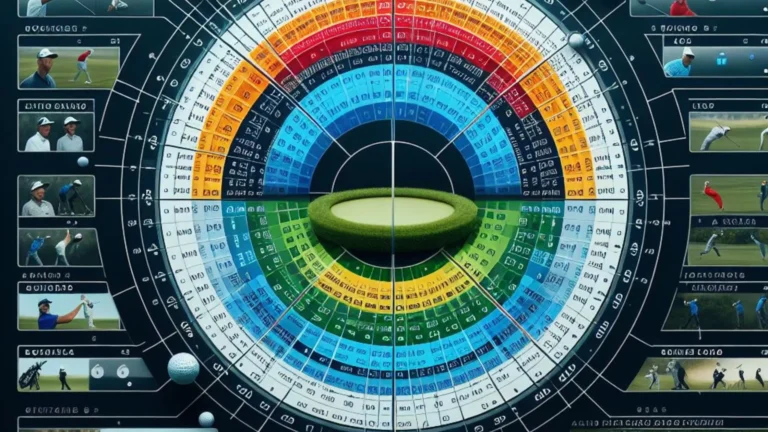What is Considered a Normal Golf Swing Speed?
Golf swing speed is an important part that influences performance and distance in golf. The faster the club head speed at impact, the further the golf ball will potentially travel. However, not all golfers have the same swing speed capabilities. Generating an optimal and efficient swing speed is key. So what constitutes a “normal” golf swing speed that most amateur golfers can reasonably achieve? This article will examine the averages and ranges for normal golf swing speeds based on age, gender, and handicap. Additionally, the components that make up swing speed like flexibility, strength, technique, and equipment will be analysed in terms of their contribution to moderate swing velocities.
Average Swing Speeds Based on Age
A golfer’s age is a significant factor when evaluating typical golf swing speeds. Older golfers naturally lose some flexibility, athleticism, and club head speed over time. However, staying active and working on swing mechanics can help minimise this decline in velocity. Here are the general guidelines for average driver swing speeds based on a golfer’s age:
20 to 29 Years Old: Between 90 to 100 mph is common for male amateur golfers in their 20s. For females, 82 to 92 mph is considered normal. Golfers in this age group are at their athletic peak and can generate substantial club head speed if they have sound fundamentals and technique.
30 to 39 Years Old: Male golfers in their 30s can expect an average driver swing speed of 85 to 98 mph if they stay active and practice regularly. For female golfers, typical swing speeds are 78 to 90 mph. Slight reductions in flexibility and distance begin showing in the 30s for some golfers.
40 to 49 Years Old: As golfers reach their 40s, average swing speeds decrease to 80-95 mph for male amateurs and 72-86 mph for female amateurs. Efforts to maintain strength and mobility help minimize losses.
50 to 59 Years Old: In their 50s, the average male golfer’s driver swing speed drops to 76-90 mph, while the average female golfer drops to 68-82 mph. Loss of distance is more noticeable, but technique adjustments can help.
Over 60 Years Old: Golfers over 60 lose more distance—males average around 73-85 mph and females 60-78 mph. But senior golfers can still drive the ball solid distances with optimal equipment, swing adjustments, and strength training.
As evidenced, age contributes to a reduction in club head speed due to declining flexibility, muscle mass, athleticism, and injury resistance. However, focusing on the correct mechanics and working on golf-specific training can help older golfers maintain reasonable swing speeds.
Average Swing Speed Based on Handicap and Skill Level
The speed a player can swing their driver also relates closely to their handicap and overall golfing ability. Golfers who shoot lower scores and have lower handicaps (indicating greater skill) generally have faster swing speeds. Here are the typical driver swing speed guidelines based on a golfer’s handicap:
Professional Golfers: The best players in the world, including PGA and LPGA tour pros, generate very high club head speeds, averaging between 105 and 125+ mph with a driver. This allows them to maximize distance.
Low Handicappers (0-9): Better amateur players and mid to high school level golfers with handicaps in the 0-9 range can achieve driver swing speeds averaging 90-105 mph. Faster velocity reflects efficient swings.
Mid Handicappers (10-19): Mid-level amateur golfers generally see driver speeds between 80-95 mph. This range covers a broad section of average mid-handicap recreational players.
High Handicappers (20+): Novice and high handicap golfers often generate relatively slow swing speeds below 90 mph—closer to 70-80 mph. Less experience, athleticism, and poor mechanics inhibit speed.
As shown, driver swing speed aligns closely with handicap and skill level because velocity requires good technique, coordination, and proper weight shift. Lower handicap players have ingrained these fundamentals to achieve faster club heads.
Elements That Impact Golf Swing Speed
There are several key elements outside age and handicap that determine a golfer’s attainable swing speed. Flexibility, strength and power, swing mechanics, and golf club specs all play a role. Evaluating these components can help average golfers set reasonable speed goals and training plans.
Flexibility and Mobility
Maintaining good flexibility and mobility, especially in the core and torso, is imperative for an efficient, high-speed golf swing. Tightness hampers rotation and causes compensation elsewhere, costing power. Flexibility training, along with golf-specific exercises to increase rotational range of motion, facilitates more speed. This is true even among older golfers.
Muscular Strength and Power
Having solid muscular strength and power for generating explosive rotational speed is also vital. The hips and core region must forcibly unwind to swing the club head as fast as possible. Weakness leads to slower acceleration. Golfers should implement resistance training, plyometrics and medicine balls to drive more speed.
Sound Swing Mechanics and Techniques
Proper swing mechanics like an efficient weight shift, correct sequencing of body parts, an on-plane backswing, and neutral impact alignment are essential for optimal velocity. Flaws anywhere slow the motion. High-speed golf requires ingraining technically sound fundamentals through extensive lessons, training aids and video.
Club Specs: Shaft and Loft
Using golf clubs tailored to a player’s unique swing dynamics can help maximize speed. Most average players benefit from a more flexible driver shaft that loads and unloads efficiently for their transition. Meanwhile, having higher lofts than aggressive players (12-15 degrees) puts the club face in a better position for speed.
These core components heavily influence swing speed capabilities. Analyzing them can pinpoint areas for improvement and set reasonable velocity goals for a normal amateur golfer.
Additional Considerations for Setting Appropriate Swing Speed Goals
While knowing the general averages provides guidelines for “normal” golf swing speed, setting individual goals depends on additional factors like:
- Unique physical attributes and athletic capability
- The amount of time and resources for practice and training
- Innate talent, coordination, and swing awareness
- Golf-specific technology and launch monitor access
- Personal enjoyment vs competitiveness
Golfers shouldn’t get sidetracked into chasing a tour-professional level swing speeds—solid play comes from maximizing efficiency based on ability. Judiciously monitoring the above elements helps moderate swingers tailor improvement plans.
Conclusion
Amateur golfers can utilize the general averages presented in this article as references for establishing “normal” swing speed expectations based primarily on age, gender, and playing ability. While professionals reach triple-digit velocities, most recreational players realistically generate driver club head speeds between 70 and 100 mph. Setting attainable speed goals requires honestly assessing fitness, mechanics and technique in order to make gradual improvements through lessons and training. What ultimately matters is not raw velocity, but rather optimizing efficiency to achieve desired driving distances and scores. With sound fundamentals and intelligent practice, average players can produce effective swing speeds for enjoying the game.







